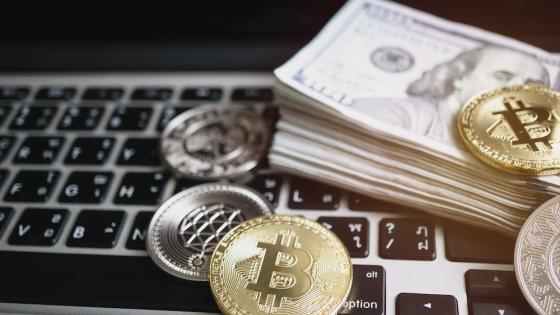Protection of privacy is an important issue in the information age (Acquisti et al. 2015). The particular relevance of this issue in the monetary field becomes evident if we observe three stylised facts. First, public paper currencies, most of which are in the form of large-denomination banknotes, are still appreciated for their resilience and their anonymity. We have seen a rise in the circulation of paper currencies in both advanced and emerging economies (Berentsen and Schar 2018, Shirai and Sugandi 2019), with only Sweden and Norway being notable exceptions (Armelius et al. 2020).
Second, the recent wave of innovation in private payment systems has been characterised by the issuance of private digital currencies; in these payment architectures, cryptographic procedures are used to protect privacy (Schilling and Uhlig 2018, Halaburda et al. 2020, Auer and Tercero-Lucas 2021). A notable share of private digital currency users have expressed their appreciation for the anonymity associated with these systems (Bohme et al. 2015). Moreover, individuals interested in using cash for illegal reasons seem to view private digital currencies as close substitutes (Hendrickson et al. 2019).
Third, the issuance of a (public) central bank digital currency (CBDC) is an option that central bankers are carefully considering. Given that a hypothetical CBDC can be designed in different ways, and that money digitalisation may lead to a process of unbundling and re-bundling the different properties of money (Brunnermeier et al. 2021, Bordo 2021), the level of privacy is a key issue in this debate, especially with respect to retail payments (De Lis and Urbiola 2020, Agur et al. 2021).
In a monetary transaction, full privacy protection coincides with anonymity. As such, a crucial question arises: does privacy matter in shaping the demand for money? This question can be answer using laboratory experiments based on a novel methodology that combines standard techniques for eliciting individual preferences with some innovative aspects (Borgonovo et al. 2021).
Money demand, privacy and experiments
From a theoretical point of view, the experiments were based on a specification of the demand for money, in which a medium of exchange, as a unit of account, has three simultaneous economic functions. The first two are the specific medium’s standard functions as a medium of exchange and as a store of value – that is, the original Keynesian transaction and speculative motives (Baumol 1952, Santomero and Seater 1996). The third is the novel function of store of information and privacy protection (Kocherlakota 1998, Kahn et al. 2005).
The experiments used the definition of a safe medium of exchange, which focuses on a medium’s liquidity properties (Greenwood et al. 2015). In parallel, the experiments evaluated the ability of the medium of exchange to preserve its expected value (Caballero et al. 2017), which is the second property of a currency. Holding a medium of exchange implies an expected opportunity cost that can be calculated by comparing the total return associated with alternative mediums (or currencies).
Finally, a currency can offer privacy protection. There is evidence of a preference for anonymity in the financial field (Charness and Neugebauer 2019, Weber et al. 2018), yet individual preferences for the anonymity dimension in the demand for money have not been investigated in previous research, although Athey et al. (2018) analysed the more general preference for privacy. The experiments have been focused on full privacy (i.e. anonymity) and answer the question of whether anonymity in monetary transactions has any value in absolute and relative terms when compared with the other properties of money.
The experiments started with a descriptive analysis of the data and then continue with an inferential analysis. When presented with two mediums of exchange differing only on the anonymity dimension, experiment subjects assigned to the anonymous medium assigned a value 1.44% higher on average than the values assigned to the non-anonymous medium of exchange. Thus, anonymity per se matters.
Furthermore, it has been tested whether the preference for anonymity was related to subjects’ risk attitudes. In the experiments the subjects have been classified as risk-averse/prone/neutral if the risk premium was positive/negative/null for at least 50% of their choices. For the risk-prone subjects, the increase was 30% greater than for risk-averse subjects. In other words, risk-prone subjects seem to assign more value to the property of money as a store of privacy. There are several possible interpretations for this result. For example, people may not want others to know that they like risk. That is, as risk aversion is the social norm, risk-loving agents may have a greater desire for anonymity. Another possible interpretation is that risk-prone subjects are more prone to illegal deals and therefore might like anonymity more.
Finally, the experiments provided an understanding of how much anonymity matters when compared with illiquidity risk and expected return. The first two attributes – illiquidity risk and expected return – tend to be more influential than anonymity, with expected return having a greater influence than illiquidity risk.
Among the anonymous mediums of exchange, the trade-off between the two properties of liquidity and return was relatively high. To accept higher illiquidity risks, individuals require a more-than-proportional increase in the expected return.
These results can be interpreted as signalling that anonymous mediums of exchange are considered attractive if they promise gains substantially greater than the associated risk. This can explain the initial interest in bitcoin, which initially had high returns that overwhelmed the associated illiquidity risk. It can also explain the appetite for new and emerging private digital currencies that can produce high returns despite the associated non-negligible illiquidity risk.
At the same time, consider a digital currency issued by an entity with a low illiquidity risk, such as a central bank. In this case, the denominator in the ‘return/illiquidity risk’ ratio is small. As soon as the return is not negligible, the ratio is high. For illustration purposes, consider a central bank digital currency. For such a medium of exchange, the default probability is close to zero (or even zero). If it is zero, then any return would make the ‘return/illiquidity risk’ infinite. But let us set the illiquidity risk at per year. Then, a yearly return of 0.0001 would lead to a return/illiquidity risk of 10 – a region in which individuals would allocate a considerable amount of their capital to this medium.
Lessons from experiments
The experimental results show that (1) anonymity matters; (2) the opportunity cost is the more relevant property of money; (3) a combination of the three properties of money is likely to increase interest in a medium of exchange; (4) risk-prone individuals like anonymity even more; and (5) given the level of anonymity, the trade-off between illiquidity risk and return is relatively high. In other words, to accept higher illiquidity risks, individuals require a more than proportional increase in the expected return.
Given that the experiments confirm that anonymity matters, two considerations follow. On the one hand, cash can maintain its appeal as an anonymous medium of exchange. On the other hand, the more other mediums can be trusted to offer anonymity while balancing illiquidity risk and expected return, the more likely the crowding out of cash becomes.
Finally, policy implications emerge for suppliers of mediums of exchange, such as banks, central bankers, and private firms. As mediums of exchange, bank currencies could be challenged by a lack of anonymity and by low expected returns – features that make private digital currencies more attractive. Similarly, the success of a private digital currency will depend on its ability to decrease the illiquidity risk and increase the expected return while credibly guaranteeing anonymity. A central bank digital currency is unique because it is an electronic medium of exchange as well as a public currency. The experiments show that its attractiveness depends on how it is designed in terms of the level of privacy and interest-bearing mechanisms. In principle, the illiquidity risk of a central bank digital currency is low. At the same time, it seems unlikely that individuals will view it as offering the same anonymity as cash. The experimental results show that offering a yield could help increase its overall appeal.
References
Acquisti A, L Brandimarte and G Loewenstein (2015), “Privacy and Human Behavior in the Age of Information”, Science 347(6221): 509-514.
Agur I, A Ari and G Dell’Ariccia (2021), “Designing Central Bank Digital Currencies”, Journal of Monetary Economics.
Armelius H, C A Claussen, A Reslow (2020), “Withering Cash: Is Sweden ahead of the Curve or Just Special?”, Sveriges Riksbank, Working Paper Series 393.
Athey, S, C Catalini and C Tucker (2018). “The Digital Privacy Paradox: Small Money, Small Costs, Small Talk”, Research Paper Series 24, Stanford University.
Auer, R and D Tercero-Lucas (2021), “Distrust versus Speculation: The Drivers of Cryptocurrency Investments”, VoxEU.org, 06 October.
Baumol, W J (1952), “The Transactions Demand for Cash”, Quarterly Journal of Economics 66: 545-556.
Berentsen, A and F Schar (2018), “The Case for Central Bank Electronic Money and the Non-Case for Central Bank Cryptocurrencies”, Federal Reserve Bank of St. Louis Review 100: 97-106.
Bohme, R, N Christin, B Edelman and T Moore (2015), “Bitcoin: Economics, Technology, and Governance”, Journal of Economic Perspectives 29:213-238.
Borgonovo, E, S Caselli, A Cillo, D Masciandaro and G Rabitti (2021), “Money, Privacy and Anonymity: What Do Experiments Tell Us?”, Journal of Financial Stability 56(100934).
Bordo, M (2021), “Central Bank Digital Currency in an Historical Perspective”, VoxEU.org, 19 October.
Brunnermeier, M K, H James and J P Landau (2021), “The Digitalization of Money”, BIS Working Paper Series 941.
Caballero, R J, E Farhi and P O Gourinchas (2017), “The Safe Assets Shortage Conundrum”, Journal of Economic Perspectives 31(3): 29-46.
Charness, G and T Neugebauer (2019), “A Test of the Modigliani – Miller Invariance Theorem and Arbitrage in Experimental Asset Markets”, Journal of Finance 74: 493-529.
De Lis, S F and P Urbiola (2020), “Retail Central Bank Digital Currencies: Means of Payment vs Store of Value”, SUERF Policy Note 183.
Greenwood, R, S G Hanson and J C Stein (2015), “A Comparative Advantage Approach to Government Debt Maturity”, Journal of Finance 70: 1683-1722.
Halaburda, H, G Haeringer, J S Gans and N Gandal (2020), “The Microeconomics of Cryptocurrencies”, NBER Working Paper Series 27477.
Hendrickson, J R, T L Hogan and W J Luther (2019), “Cash, Crime and Cryptocurrencies”, American Institute for Economic Research, Sound Money Project Working Paper Series 1.
Kahn, C M, J McAndrews and W Roberds (2005), “Money is Privacy”, International Economic Review 46(2): 377-399.
Kocherlakota, N R (1998), “Money is Memory”, Journal of Economic Theory 81: 232-251.
Santomero, A M and J J Seater (1996), “Alternative Monies and the Demand for Media of Exchange”, Journal of Money, Credit and Banking 28: 942-960.
Schilling, L and H Uhlig (2019), “Currency Substitution under Transaction Costs”, AER Papers and Proceedings 109: 83-87.
Shirai, S and E A Sugandi (2019), “The Cash Hoarding Puzzle and the Rising Demand for Cash”, VoxEU.org, 16 October.
Weber, M, J Duffy and A Schram (2018), “An Experimental Study of Bond Market Pricing”, Journal of Finance 73: 1857-1892.








